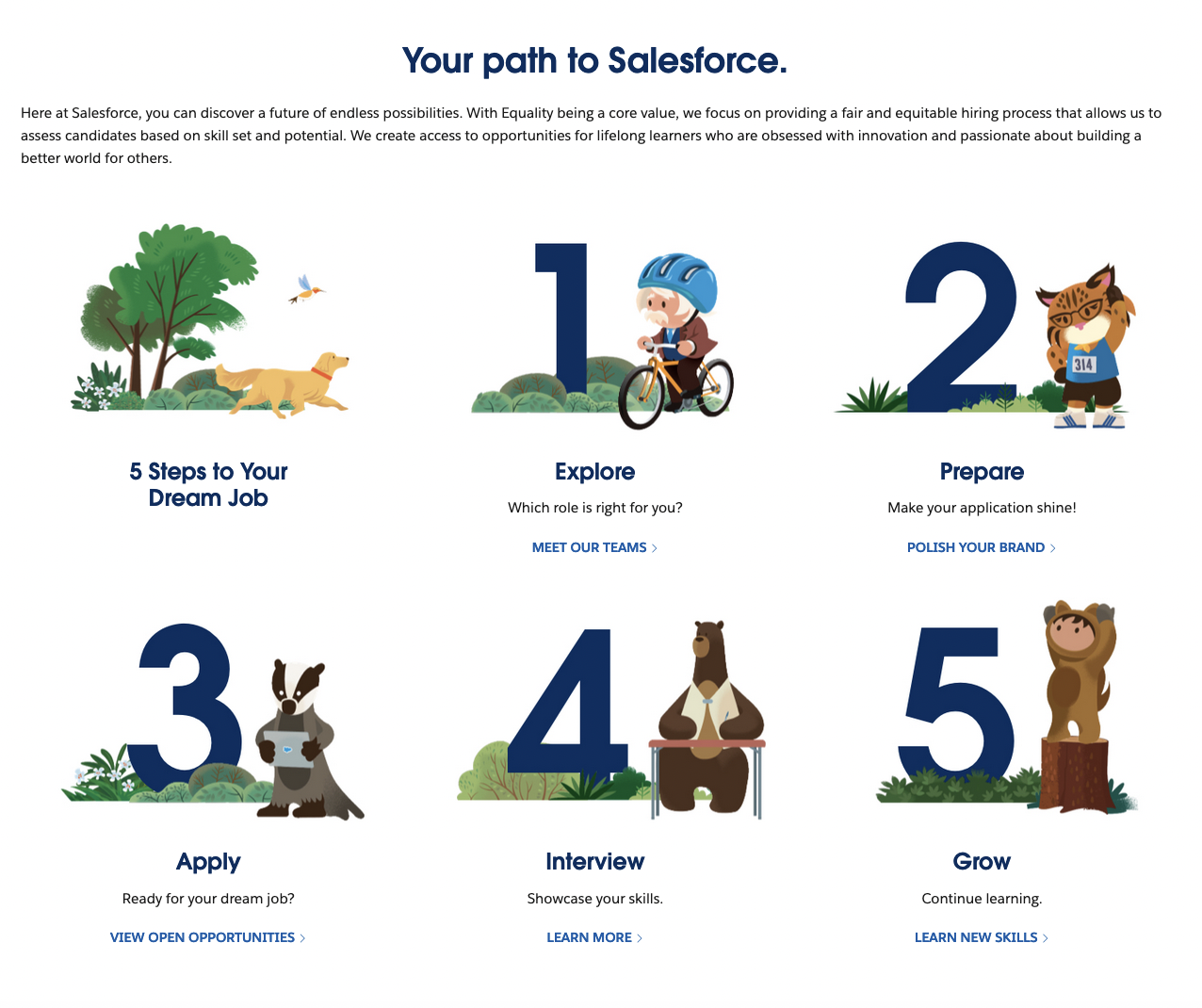5 tips to simplify your recruitment process

Every HR leader wants to help recruiters make the hiring process more efficient. But with recruiters’ busy schedules—being tied up with CV screening and phone interviews—they might feel that they don’t even have the time to simplify their processes.
How can you improve recruiters’ experience and make their work easier and more flexible?
In this post, we’ll first take a look at why simplifying the hiring process is important—both for recruiters and candidates. Then we’ll share some concrete tips and examples for making the process easier and better organized.
Why simplicity is key for recruiters and candidates
A simple hiring process ultimately allows recruiters to fill positions faster and make their work easier. Simplicity is also key for a positive candidate experience. With the Great Resignation, the power in the recruitment process has shifted to employees.
A long, complicated, or messy hiring process could scare off the best candidates—they’ll likely become frustrated, lose interest, or accept an offer elsewhere. And if they share their negative experiences on Glassdoor, social media, or with their friends and colleagues, your employer brand could take a hit.
The competition for talent is now especially fierce—the top candidates are off the market within 10 days. Companies must have the right practices and tools in place to act fast and secure the best candidates.
How to simplify your hiring process
1. Create clear and detailed job descriptions
Put yourself in your candidate’s shoes: If you were to come across a job description that only included the company name, job title, and that they are looking for a “rockstar and passionate team player to join an agile team in an innovative company,” would you rush to apply, or consider this to be a major red flag?
Vague job descriptions that try to sound fun or cool will likely only irritate top candidates. Instead, use clear and specific language that outline the tasks and day-to-day activities for the role, and what benefits applicants can expect. Be sure to share the salary range and growth and development opportunities in the description.
Founder and CEO at BankingGeek, Max Benz, shares the importance of detailed job descriptions:
In the past, hiring new employees was a time-consuming and often frustrating process. However, by streamlining our hiring procedure, we have been able to save valuable time and energy. The first step is to create a detailed job description that includes all the essential skills and qualifications. Once we have a clear understanding of what we are looking for, we post the job online and encourage applications from a diverse pool of candidates. We then use an automated screening tool to identify the most eligible applicants and invite them to interview. By following these simple steps, we have been able to simplify our hiring process and make our job easier.
2. Make it easy for candidates to apply
How easy is it for candidates to apply to your positions online? Asking candidates to re-enter their information in an application after they’ve already attached their resumes is sure to frustrate them. Maybe there’s a bug in the system that makes it difficult for candidates to complete their applications. Or uploading their CV takes so long that they decide to drop everything.
The best way to make sure your application process is simple is to try it for yourself. Audit all steps of the application process and make note of any steps that are redundant, take too long, or that simply aren’t working. You don’t want to lose candidates because of technical issues.
Also make sure that your careers page is informative and user-friendly. Potential candidates should easily get a sense of your company culture and what to expect from the recruitment process. For example, Salesforce clearly outlines the five-step hiring process on their careers page:

Your career site and overall hiring process should also be mobile-friendly. A mobile-friendly job ad can increase the number of candidates by 11.6%, according to Glassdoor research. Ideally, candidates should be able to find your job ad and apply from their mobile device without having to download any extra apps so that their experience is as smooth as possible.
3. Use video interviews to speed up the hiring process
CV screening followed by an in-person interview has been the traditional hiring process for many organizations. But when you have many candidates to interview, scheduling the meetings—whether they’re face-to-face, by telephone, or live video interviews—talking to candidates, and reviewing your notes afterwards takes up a huge amount of time.
To speed up the hiring process, many recruiters are using pre-recorded video interviews after CV screening. At first, you might think this complicates the hiring process by adding an extra step. But this isn’t the case—getting started with pre-recorded video interviews only takes 15 minutes, and it actually simplifies the process by adding flexibility for both recruiters and candidates.
Recruiters don’t need to spend hours scheduling live chats with multiple candidates— instead, they can simply pre-record their video interview questions and review the candidates’ videos at their convenience.
Candidates can then record their video responses in their own space, according to their schedule. You could also allow them to re-record their videos, which can help them feel more comfortable answering your questions.
How pre-recorded video interviews speed things up
Pre-recorded interviews cut the hiring process time in two ways.
First, they are easier to implement and less time-consuming than personal interviews because it’s more convenient for applicants to attend and they eliminate the physical waiting time.
Secondly, since they are pre-recorded, and the interviewee is not present in real-time when you review their responses, hiring managers can cut the interview short whenever they’ve seen enough without worrying about offending an applicant.
Pre-recorded interviews are highly effective in streamlining the hiring process and even provide the added benefit of making interviews more standardized and fair.
You can use video interviews at any point in the hiring process to simplify things. For example, Wendy Makinson, HR manager at Joloda Hydraroll, uses pre-recorded videos to replace presentations:
Previously, it was time-consuming and costly to run a day of presentations and tricky to coordinate diaries to make sure all the relevant members of the team could attend. Asking candidates to pre-record presentations and submit them to us has simplified the whole process. It allows us to screen the presentations quickly and remove anyone unsuitable, then the rest of the panel has 48 hours to watch the presentations at a time that suits them before providing feedback. It’s also been a more popular move with candidates as they can record at a time that suits them and in a familiar environment, and if something goes wrong, they can simply re-record before submitting.
Companies typically save around 55% of their time on recruitment with video interviews.
Find out how much you can save with pre-recorded interviews with our ROI calculator here.
Spend less money per hire
Using pre-recorded video interviews means you’ll spend less time and money per hire. You’ll be able to tell in a matter of minutes whether a candidate is a good fit. By getting a glimpse of the candidate’s motivation and personality, recruiters can decide whether a “maybe” candidate belongs to the “yes” pile or the “no” pile.
Quickly identifying the most promising candidates with pre-recorded video interviews helps speed along the entire hiring process: recruiters will have fewer candidates to manage, interview, assess, and keep track of. This way, you can cut down on admin work before face-to-face interviews and avoid spending time with unsuitable candidates.

“The pandemic has made the use of technology such as scheduling and pre-recorded interview tools to streamline the hiring process more mainstream. And I believe that our reliance on these technologies will be here to stay, with or without pandemic”
— Steven McConnell, the Director at Exceptional Resume Writers.
4. Standardize your interview questions
Consider standardizing pre-recorded interview questions for different roles so that recruiters across your company will know what to ask and look for in responses.
By standardizing the interview questions, JYSK Finland’s HR department saved time and increased transparency throughout the entire hiring process. When the hiring team could watch the same video replies, reflect together, and challenge one another’s decisions, they were able to ensure equitable hiring decisions. And by asking all candidates the same pre-recorded interview questions, they reduced the possibility of bias or discrimination.
To keep the video interview process as simple as possible, only ask three to five questions, and accept one- to two-minute video replies. Give candidates a specific deadline to respond by—about one week is typically a good time frame.

“Think about how to ask questions to get the most out of candidates’ answers, and try to vary the type of questions you ask.”
—Linda Wall, Recruiter at Volvo Cars.
One classic question you can ask to get a sense of your candidate’s personality is “Tell me about yourself.” Marty Spargo, CEO of REIZE, shares:
To increase efficiency and save time when conducting an interview with potential employees, I make the candidates do a 1-2 minute elevator pitch on who they are, what makes them different, and what they can offer to the company. I find this an effective way to do a quick filter on who can handle unexpected pressure, who has the ability to think and act fast according to the situation at hand, and who can get creative in an instant.
Get 10 video interview question ideas in this blog post.
5. Simplify communication with everyone involved in the hiring process
Communication between everyone involved in the hiring process—recruiters, hiring managers, and candidates—can quickly get messy and time-consuming. But it doesn’t have to be. With some intention and planning, you can simplify the process and make everyone’s work easier.
One key way to simplify the process is to use a mobile-friendly recruitment platform or applicant tracking system (ATS). You’ll have everything you need in one place, meaning you’ll no longer have to juggle multiple different tools.
Collaboration with key people becomes easier with a recruitment system, and ultimately, you’ll be better equipped to stay on track with the most important parts of the hiring process, such as candidate communication.
Instead of emailing or messaging everyone involved in several different chats, pre-recorded video interviews (integrated with your current recruitment software) allow the hiring team to give feedback and evaluate the candidates’ answers in the same place.
When it comes to communicating with candidates, be sure to explain the hiring process and timeline so they know what to expect. Poor communication—or complete lack of communication—is a major cause of candidate frustration, but hiring teams can change that. Keep candidates in the loop, communicate the next steps, and be available to answer all their questions.
For more tips on making the recruitment process more efficient, download our free Modern Recruitment Handbook here.
